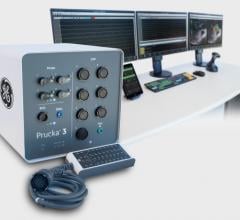By Dave Fornell, DAIC editor
It was just a couple years ago in a session at the American College of Cardiology on possible science-fiction-type cardiac technologies of the future that I first saw a slide of experimental, tiny catheter-delivered pacemakers that may some day revolutionize the field of electrophysiology (EP). In October, one of those science fiction devices, the Nanostim pacemaker, was granted market clearance in Europe and it was announced the vendor is in discussions to enter U.S clinical trials. I’m sure it is the first of many new miniaturized EP devices to come that will significantly change how patients with arrhythmias are treated.
When attending cardiology conferences, I am always on the lookout for “sexy” new technologies. This admittedly is sometimes difficult to find among a sea of academic sessions and vendors on the expo floor who are always attempting to peddle what they perceive to be the greatest invention since sliced bread. However, the Nanostim is definitely one of those rare sexy technologies that we usually only find in the fictional worlds of futuristic Hollywood movies.
The tiny device, about the size of the head of a pen, can be delivered via a delivery catheter through the venous system and placed directly into the myocardium of the right ventricle. The system eliminates the need for surgery to create a pocket under the skin for the device, or to install traditional leads. This greatly simplifies the procedure and reduces the risk of potential complications such as infection, or the need to remove old leads years in the future. The simplified procedure cuts implant time down to an average of 28 minutes.
One of the biggest issues facing EP is device battery life, as patients live longer or have devices implanted at a younger age. Even with miniaturization, Nanostim’s battery is expected to have an average lifespan of more than nine years at 100 percent pacing, or more than 13 years at 50 percent.
Speaking of battery replacement, another advantage of the system is that it was designed to be fully retrievable so it can be readily repositioned during the implant procedure, or later retrieved for normal battery replacement.
What I find more intriguing are the possibilities this type of device may have on simplifying the practice of EP, possibly offering a way to more efficiently treat larger numbers of patients at a lower cost. The delivery of this type of device might also open the possibility of implants by new operators, such as interventional cardiologists. This might have the biggest impact in rural areas of the United States or in developing countries, where EP specialists are often rare.
For more on the Nanostim and other EP technology developments in 2013 click here, or watch a video showing the Nanostim implantation procedure.



 April 29, 2025
April 29, 2025 









